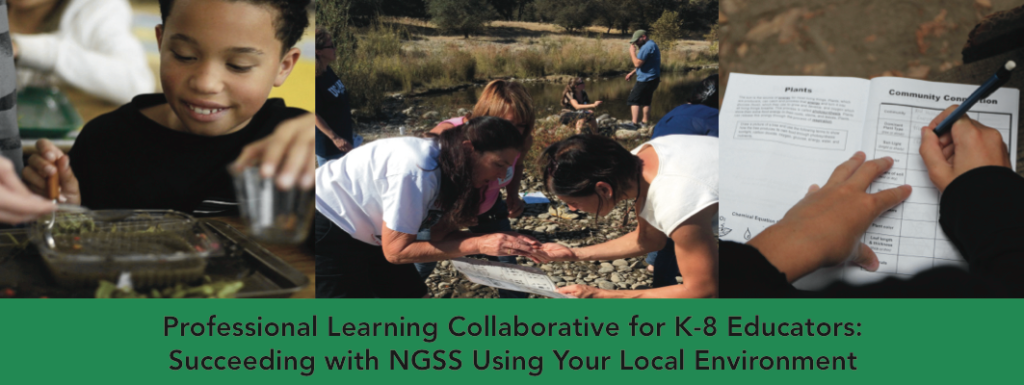
Working in the education arena can really do wonders for any misconceptions one might have about teachers having the summer off. Although school is technically out, anyone who thinks teachers don’t work year-round is sorely mistaken—as I’ve had the privilege to witness firsthand in both July and now again in August.
It’s taken months of planning, financial support from our funders, the diligent efforts of our wonderful environmental education provider partners, and one very committed county office of education, but man, was it worth it.

Together we’ve had the opportunity to embark on a pathway with over 90 K–8 San Mateo teachers and administrators exploring the connections between California’s Next Generation Science Standards (NGSS) and Environmental Principles and Concepts (EP&Cs) using the local environment as the context for learning. The Summer 2015 institute, Succeeding with NGSS Using Your Local Environment, showcases the deep knowledge and experience of lead consultant Dr. Gerald Lieberman as he explains the three dimensions of NGSS (with a focus on Disciplinary Core Ideas and Cross-Cutting Concepts), while using the Education and the Environment Initiative (EEI) Curriculum as a jumping-off point in the classroom and encouraging teachers to connect to local nonformal environmental ed providers to add hands-on experiential and project-based components for students.
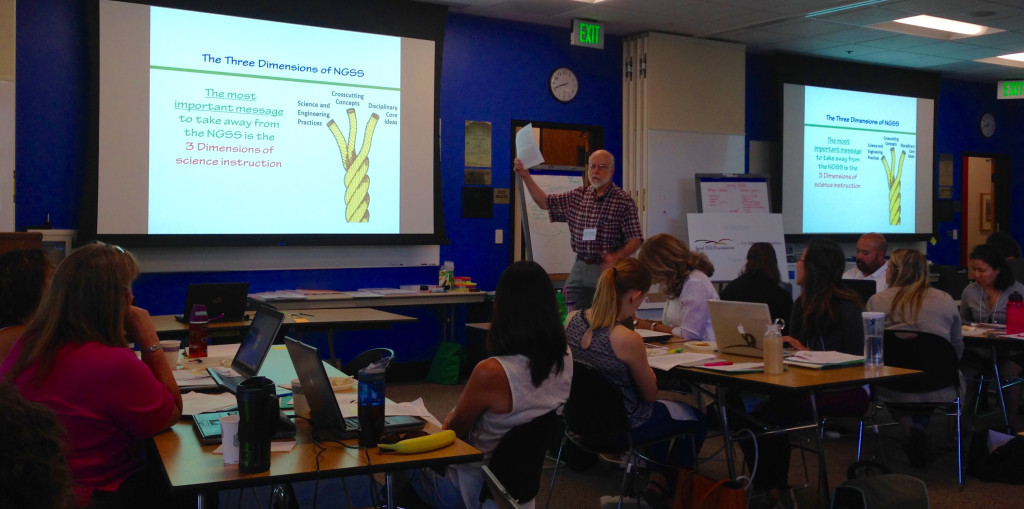
Day two of the institutes has been my favorite; on day one everyone is a little green, and there is a glazed look by the afternoon—when the sea of acronyms, the intricacies of NGSS, the 20-slides-in-five-minutes Ignite presentations by provider partners, and post-lunch food coma has set in. By day two everyone has recovered. They’ve met each other, organized themselves into groups, and are ready to begin building a unit of study collaboratively on Canvas (the online platform hosted by the San Mateo County Office of Education and provided free of charge for this project). Day two is when the fun really begins: teacher groups and provider partners work together to identify a topic in the immediate environment—air, water, food, land, recycling, energy—and find curriculum resources via the EEI Curriculum, then link the lessons they’re building to NGSS. It’s lively. There is a lot of discussion, a lot of movement, and a lot of ‘a-ha’ moments. It’s kind of like being in a room where everyone has a bag full of those Fourth of July poppers and everyone is throwing them everywhere.
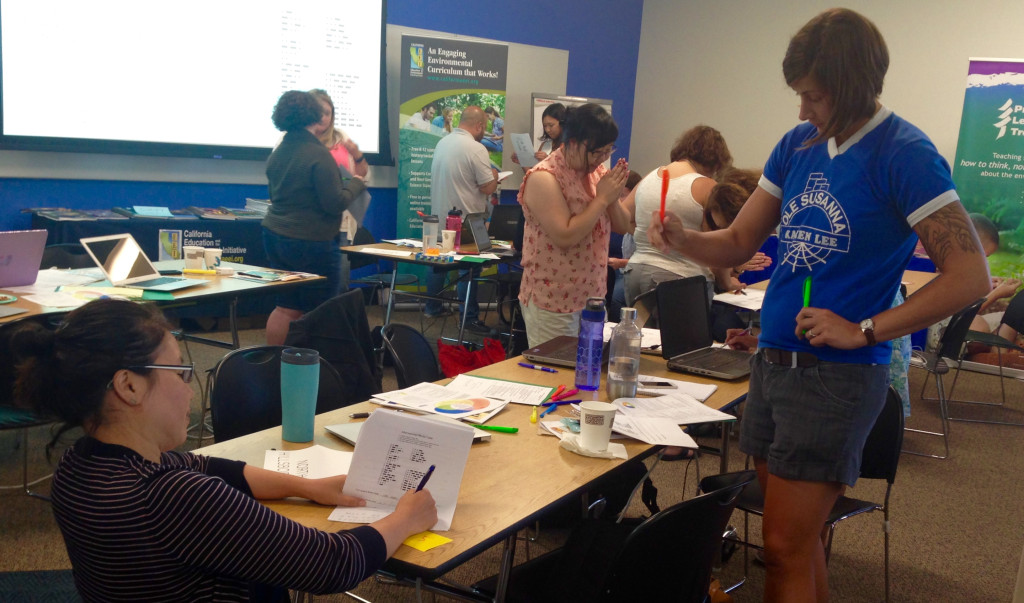
The third day of the institute is a nice blend of the first two—in addition to day one’s dive into NGSS, participants get a nice introduction to both STEM and service learning in relation to NGSS so they can round-out their approach to the units they’re creating. In a lively discussion around engineering and technology led by Ladie Malek (our esteemed institute facilitator—aka engineer, science teacher, and STEM curriculum developer), the group determined that “engineering = human ingenuity” and began naming obvious technologies like laptops, projectors, and cell phones. The ‘out of the box’ moment came when everyone agreed that other seemingly simple or mundane things like pens, paper, tables, chairs—essentially anything human-made—were also technologies. Connecting the typical engineering design process—Ask, Imagine, Plan, Create, Improve— to NGSS in an understandable and accessible way really takes the intimidation factor of new and unfamiliar standards down several notches. Before my eyes engineering actually became fun.
Day three also included the session on environmental service learning led by Jerry Lieberman focusing on community-based projects that meet actual community needs, involve collaboration with community members, and improve the quality of life for people in the community. He shared models that integrate academic content and knowledge and enable their use in real-world settings, facilitate active student reflection, and help develop a sense of caring for and about others. It’s a powerful example of why our Ten Strands tag line reads “Connecting Education, Environment, and Community.”
The third day wrap-up has my second favorite moment—team presentations. It’s like the organized outcome of day two’s semi-chaotic fun. Each team has 5 minutes to share the progress they’re making on their units of study. All present get to hear one another’s:
- Schools and grades taught
- Unit names and summaries
- NGSS and EP&C connections
- Ideas for engineering design
- Ideas for environmental service-learning
- Nonformal provider and community connections
The progress made in three days is amazing. On day one most of the group said they were NGSS beginners, but you wouldn’t know it by listening to them on day three. Every teacher team used an environmental topic to explore a disciplinary core idea for their grade level. Connections to crosscutting concepts and science and engineering practices were obvious and coherent.
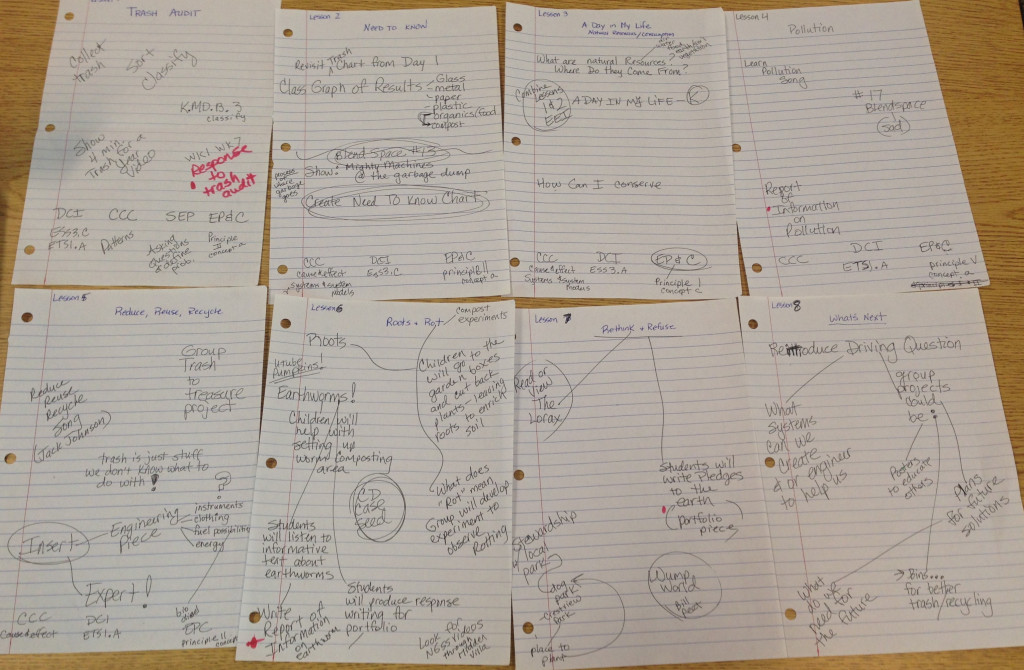
It’s incredibly stimulating and gratifying to see and hear teachers connecting with each other and the local environmental ed providers as they discuss the buffet of options open to them in creating exciting, interactive, standards-based units for their students this fall. Their commitment to teaching science more deeply, to understanding and caring for our environment, and to providing their students with impactful learning experiences is to be commended; it is inspiring, encouraging, and makes all the work we at Ten Strands do feel worth it.
Sincere and heartfelt thanks to everyone at the San Mateo County Office of Education—STEM Center (especially Mike and the facilities crew!) for hosting both institutes and providing us with a really great space, setup and cleanup, tech support and laptops for teachers, and genuine kindness. Looking forward to reuniting in January 2016 for the capstone event, where the outcomes of all the units of study will be shared!

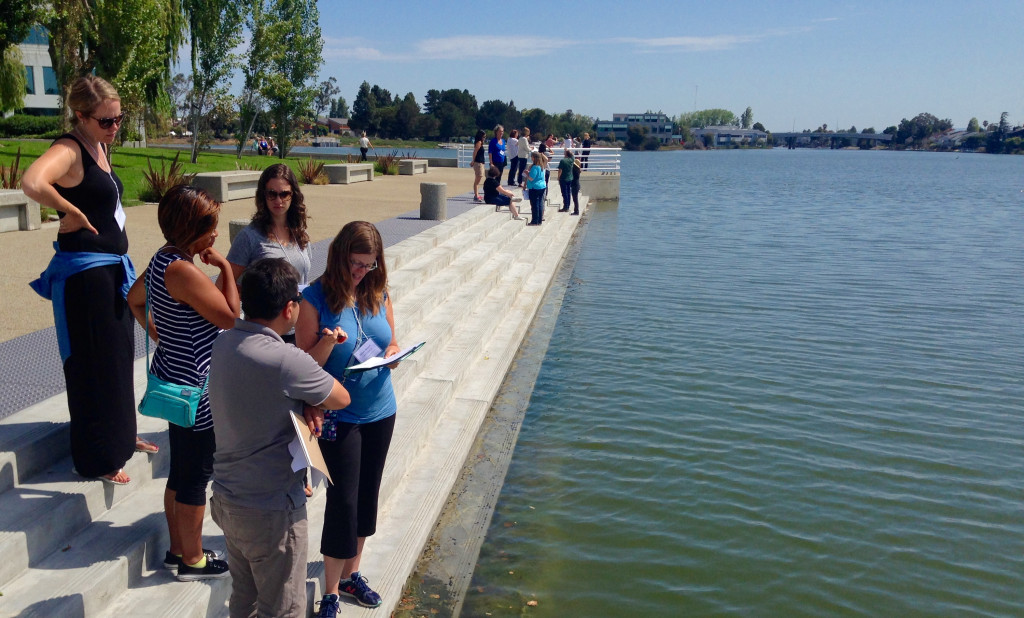
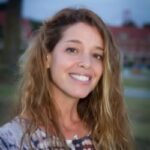
One Response
great blog! makes me wish I were still a teacher (almost!)